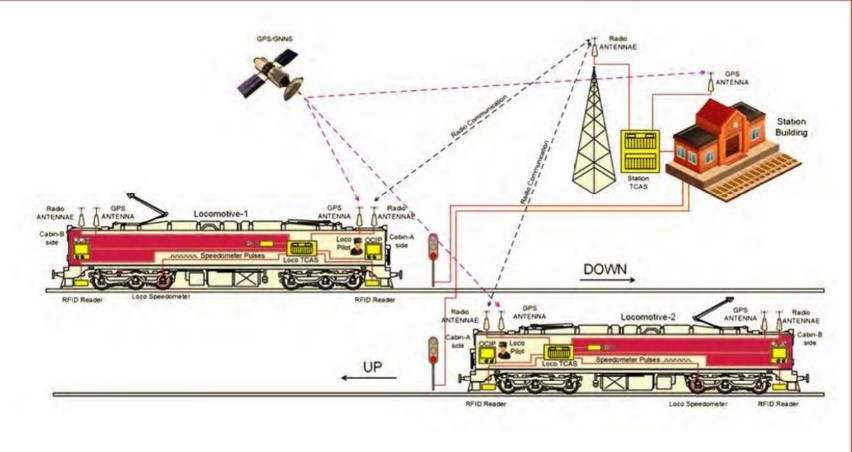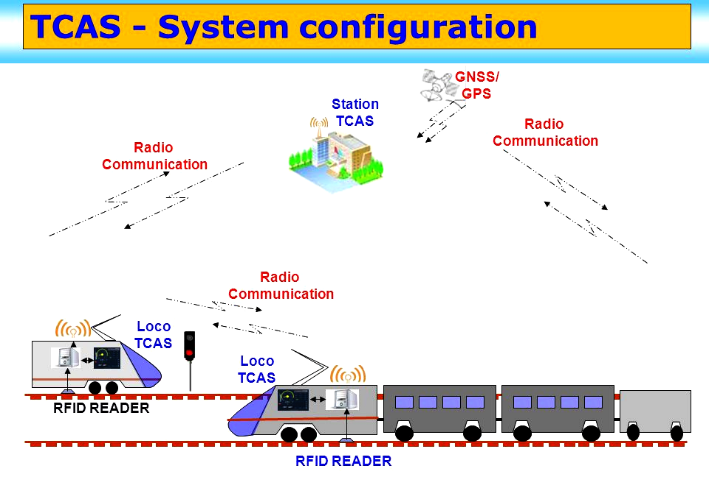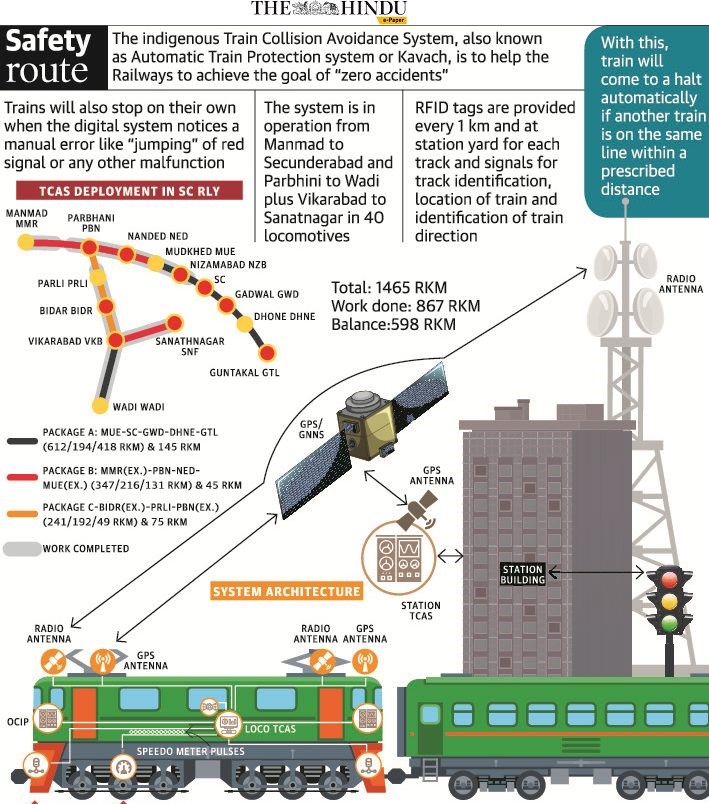Description

Disclaimer: Copyright infringement not intended.
Context
- The death of over 288 passengers in the ghastly train accident on June 2 at Bahanaga Bazaar railway station in the Balasore district of Odisha has brought into sharp focus the safety mechanisms needed to prevent such tragedies.
What is Kavach?
- The KAVACH is an indigenously developed Automatic Train Protection (ATP) system by the Research Design and Standards Organisation (RDSO) in collaboration with the Indian industry.
- The trials were facilitated by the South Central Railway to achieve safety in train operations across Indian Railways.
- It is a state-of-the-art electronic system with Safety Integrity Level-4 (SIL-4) standards.
- It is meant to provide protection by preventing trains to pass the signal at Red (which marks danger) and avoid collision.
- It activates the train’s braking system automatically if the driver fails to control the train as per speed restrictions.
- In addition, it prevents the collision between two locomotives equipped with functional Kavach systems.
- The system also relays SoS messages during emergency situations.
- An added feature is the centralised live monitoring of train movements through the Network Monitor System.
- ‘Kavach’ is one of the cheapest, SIL-4 certified technologies where the probability of error is 1 in 10,000 years.
How does Kavach work on Railway Systems?
- The Traffic collision avoidance system (TCAS), with the help of equipment on board the locomotive and transmission towers at stations connected with Radio Frequency Identification (RFID) tags, helps in two-way communication between the station master and loco-pilot to convey any emergency message.
- The instrument panel inside the cabin helps the loco-pilot know about the signal in advance without visual sighting, and the permissible speeds to be maintained.
- If a red signal is jumped and two trains come face to face on the same line, the technology automatically takes over and applies sudden brakes.
- Additionally, the hooter activates by itself when approaching a level crossing which serves as a big boon to loco-pilots during fog conditions when visibility is low.


The recent accident
- Both the Shalimar-Chennai Coromandel Express and the Yeshwanthpur-Howrah Express were not fitted with KAVACH-TACS.
- The Kavach system project is yet to be implemented on the Howrah-Kharagpur-Chennai line.
What is the Kavach deployment strategy?
- Kavach implementation is being taken up in a focused manner by the Railway Board.
- The first priorities are the High-Density Routes and the New Delhi-Mumbai and New Delhi-Howrah Sections, as they have higher chances of accidents because the trains run closer to each other.
- The second priority lines are the Highly Used Networks, the third ones are other Passenger High-Density Routes and the final priority is of course to cover all other routes.
|
PRACTICE QUESTION
Q. Consider the following statements with reference to KAVACH Automatic Train Protection (ATP) system.
a) It activates the train’s braking system automatically if the driver fails to control the train as per speed restrictions.
b) The hooter activates by itself when approaching a level crossing.
c) If two trains come face to face on the same line, the technology automatically takes over and applies sudden brakes.
Which of the statements given above are correct?
1. a and b only
2. a and c only
3. a, b, and c only
4. All of the above.
Correct Answer: 4. All of the above.
|

https://epaper.thehindu.com/ccidist-ws/th/th_delhi/issues/38453/OPS/GIABAL98P.1.png?cropFromPage=true
















